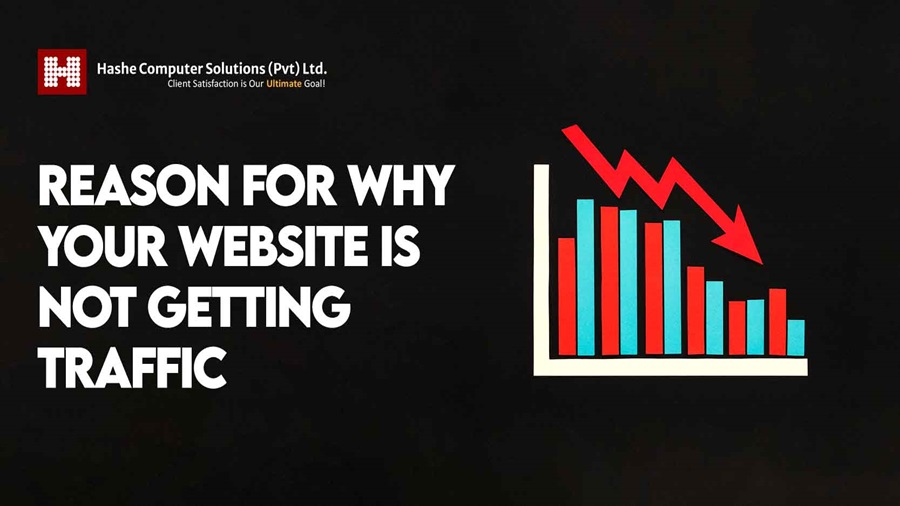Website traffic is essential for any online business since it results in conversions, which generate leads or income.
However, what if there is little to no traffic to your website? How do you figure out what the issue is? It could be due to a variety of factors, such as a lack of an inbound marketing plan or an ignorance of your target market.
This article will help you understand some of the main signs that might be preventing users from visiting your website and provide tips for increasing traffic. So, keep reading to know why your website is not getting traffic.
Algorithm Updates
Search engines continually change their algorithms to enhance the user experience. Though search engine users generally gain from these adjustments, they might influence your rankings positively or negatively.
Your traffic may suffer if an algorithm change results in several crucial keywords falling from page 1 to page 2.
What to do about Algorithm Updates
Search engine upgrades are unpredictable and unavoidable for businesses. However, companies may learn to adapt to changes and use cross-channel marketing to cope with them.
Cross-channel marketing uses a variety of channels, including social media, PPC, and email, rather than relying only on one to drive visitors to the website.
When an algorithm changes, you can adjust to it. Learn about the upgrade first. Although Google typically doesn’t provide particular algorithmic information, it did provide some guidelines to consider if an update harms your website.
SEO specialists also examine trends and write about the highlights of new updates. Use these resources to learn and adapt. Most of the time, your website traffic will resume its upward trend.
Your Website is not Secure.
The significance of cybersecurity has grown considerably in recent years, and Google has reacted to this necessity. Google added HTTPS as a minor ranking factor in 2014. As a result, search engine users are now notified when they visit a website that utilizes HTTP instead of HTTPS.
At this point, the majority of users will retreat to safety. Few of those who remain are likely to convert. Who would buy something from an insecure website, after all?
In short, if your website traffic has decreased or has not increased after months of digital marketing, be sure your site is using HTTP.
How to Secure Your Website
- Before you start, look for a reliable developer. They will have a significant impact.
- Get a Secure Sockets Layer (SSL) certificate next. Some site servers offer complementary SSL certificates, so verify with your hosting provider before obtaining one elsewhere.
- Enable your SSL certificate via your hosting platform.
- Install the certificate in your domain.
- Lastly, configure a redirect from your HTTP website to your secure one.
Your Website is not Google-Ready.
It is a misleadingly complicated problem. A website won’t receive visitors if it doesn’t use best practices to entice search engines to crawl, index, and rank its content. However, those best practices reveal more levels of complexity.
Here are the two crucial best practices to make your website Google-ready.
Do You have a Keyword Strategy?
A strategic, up-to-date keyword list, applied throughout your site’s content, is critical to increasing website traffic. Conversely, a keyword list that is obsolete, impractical, or simply nonexistent can stifle growth.
Does Your Website Exhibit Expertise, Authority, and Trustworthiness?
Expertise, authority, and trustworthiness, or E-A-T, are the cornerstones of a website’s online visibility. Websites won’t receive much, if any, traffic if they don’t exhibit E-A-T.
Expertise: Do you understand your topics sufficiently to discuss them in an understandable and engaging manner?
Authority: Do you appear to be an authority on your topic? Are you a leader in your field?
Trustworthiness: Why should your website’s visitors trust you? Verify the content of your website for typos, grammatical errors, out-of-date or incorrect information, etc. Even a tiny error can make the visitors perceive you as unprofessional.
Your Website is not Mobile-Friendly.
Google declared in June 2021 that mobile-first indexing will be the default for all webpages. In other words, Google considers your mobile website when deciding how to rank your pages.
Problems with your mobile site may affect the flow of traffic to your website because Google places a high value on mobile usability as a ranking factor.
What to do to Evaluate the Health of Your Mobile Site?
Check your Mobile Loading Speed: Slow websites annoy everyone. Use Google’s PageSpeed Insights and make informed modifications for more understanding of your page performance.
Check Responsiveness: A responsive website is visually appealing on both desktop and mobile devices. Check out your website on a mobile device. What does it look like? Users won’t stay on your homepage if the elements are disorganized and unclear.
Keep in mind that Google encourages excellent user experiences and bases its evaluation of your website on its mobile version. Your internet presence will suffer if your mobile site is subpar.
You are Not Creating Enough Content.
Content marketing is critical for achieving online visibility. Google recognizes and rewards websites that consistently produce original, high-quality content. Additionally, there are more opportunities to rank for keywords when there is more content.
Ultimately, you cannot anticipate high website traffic if you are not creating content or if your content is subpar and inconsistent.
Connect with Hashe for Exceptional Digital Marketing and SEO Services!
Are you interested in maximizing the digital potential of your website? We can make it happen! Hashe is committed to helping businesses thrive through results-driven digital marketing. Contact our team to find out more about how we can increase your traffic: https://www.hashe.com/contact-us/.

